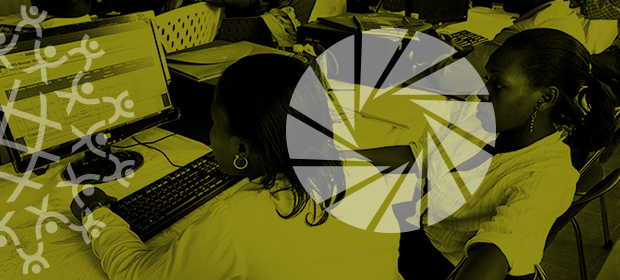Where We Work
See our interactive map


The government of Kenya is now using IntraHealth’s iHRIS software to manage 25,000 health workers contracted through the President’s Emergency Plan for AIDS Relief (PEPFAR).
IntraHealth already supports national and county governments in managing Kenya’s 67,000 public sector health workers using iHRIS through the USAID-funded Human Resources for Health Kenya Mechanism. But now that use is expanding.
HIV testing, care, and treatment in Kenya is heavily PEPFAR-funded. As part of USAID’s Journey to Self-Reliance, which emphasizes localization, the government of Kenya is increasing support and management of its health workforce—and it’s using iHRIS to do so. The free, open source software helps countries around the world track and manage their health workforce data to improve access to services.
"With reliable data in iHRIS, planning and budgeting can ensure PEPFAR staff are absorbed into the government payroll," says IntraHealth’s iHRIS manager, Francis Mbate.Previously, PEPFAR collected personnel data using spreadsheets, then aggregated them for analysis. But this system was problematic. “The challenge with this model is that it introduces a lot of data entry errors,” Mbate says. “And it’s time-consuming, since the data must be aggregated at a single source.”
But iHRIS allows users to upload their data while the system validates the entries and ensures high-quality data output. Then the software aggregates and provides results in real time.
“We’ve been able to design a system that gives the implementing partners control over the upload and continuous update of their data, thus ensuring that data are up-to-date,” Mbate says. “The real-time graphs and data tables for reporting will ease the analysis required for decision-making.”
The government of Kenya is increasing support and management of its health workforce—and it’s using iHRIS to do so.
iHRIS also allows users to upload data sets from different country operational plan periods and can generate reports to compare data between periods. This means the government can use evidence from iHRIS data to absorb staff with fewer delays to service delivery.
“As management of the HIV health workforce transitions to the government, there should be minimal disruption of services,” Mbate says.
To aid in decision making, the system has been built with summary tables and graphs to visualize the deployment, service area, gender, and cost of staff supported by implementing partners. The visualizations provide evidence to county health departments as they plan to absorb these staff into the county payroll, ensuring there’s no interruption to the provision of HIV services.
There are already positive results. During county meetings, IntraHealth runs analytics to understand health worker workload and compare staffing and service delivery data for HIV and reproductive, maternal, neonatal, child, and adolescent health services.
Counties use the data to reallocate funds for hiring new staff and identify recruitment needs. In one case, the county government of Kisumu was able to allocate funds to recruit 169 staff. These health workers have since been onboarded and deployed to support service provision in health facilities within the county.
In 2019, IntraHealth International rebuilt its flagship iHRIS software in a global effort to make the program simpler, more adaptable, and easier to manage and customize for countries that want to use it to manage their health worker data. To learn more, visit ihris.org.



